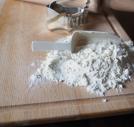Reversing Diabetes: Hype or Hope?
There have been many books and articles written on the topic of reversing diabetes. Is it really possible to make diabetes go away?
Let's Define Reversal
When we speak of reversing diabetes, what do we mean? Some articles claim that type 2 diabetes can be completely reversed within 30 days and type 1 diabetes can be improved. Another argues that "unclogging" the pancreas can reverse a diagnosis of type 2 diabetes in just 11 days. Still another says that rye bread can reverse the genetic markers that cause diabetes.
Diabetes can be the result of genetic predisposition or triggered by any of a myriad of causes, including metabolic syndrome, acquired insulin insensitivity, pancreatitis or pregnancy, among many others. None of these causes is addressed in the writings noted above.
For our purposes, the definition we will use for "reversal" is to be able to discontinue medications and still have "normal" blood glucose levels, with no implied time limit.
Moving Toward Reversal
If we really want to reverse type 2 diabetes, we have to start early – before the disease has progressed within the body. Certain aspects of diabetes cannot be reversed, like pancreatic cells that no longer produce sufficient insulin after a period of overuse. Once those cells stop producing, nothing will bring them back.
A medical check for diabetes or pre-diabetes is helpful. It can give you the knowledge to know what you are up against. If you are pre-diabetic, then you can learn the value of your A1c reading for a quarterly or semi-annual view of your average sugar levels. If you are diabetic, you will learn how to get more current data, your blood sugar measurement at any given moment in time, by pricking your finger and measuring the result.
Once you have your starting point, it is time to act.
The Steps to Reversal
Weight loss and exercise go hand-in-hand when it comes to reversing the diagnosis of type 2 diabetes. The loss of between 5 and 10 percent of body weight, coupled with perhaps 30 minutes of walking per day, five days per week, is an excellent start. Walking to the mailbox, walking up the stairs at work, and walking around the block where you live every evening are all ways you can work up to this level of exercise, starting out with 5 to 10 minutes per day.
Calorie counting helps, and a diet that is rich in proteins and complex carbohydrates, while being low in fats, is another plus on your way to not needing medication to treat your diabetes.
Nothing is going to happen overnight. In fact, it might be a while before your blood sugar ranges are where they are supposed to be, if in fact you are able to accomplish this. If you do accomplish your goal, understand that you will need to maintain the same levels of exercise and dietary control for the rest of your life, if you are truly to "beat" diabetes.
If you don't reach your goal of reversing your diagnosis, you should not count this as a failure. Even if you still are suffering from diabetes, whatever effort you took to avoid the diagnosis is going to leave you in better health, with better control over your disease. Continue your exercise and your diet control, and you could be able to get by with the least medication possible.
Sources: CNN Health and WebMD


































